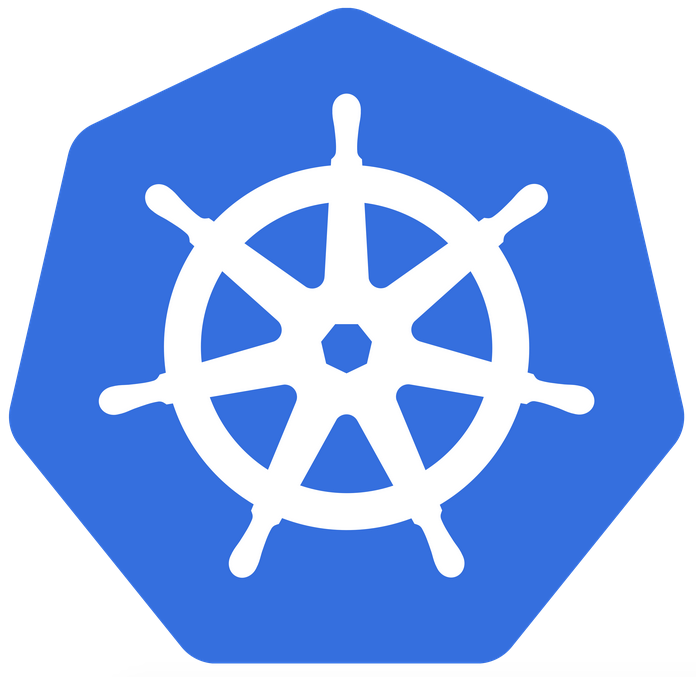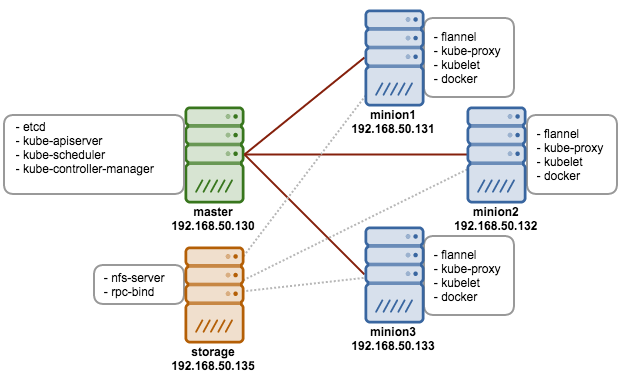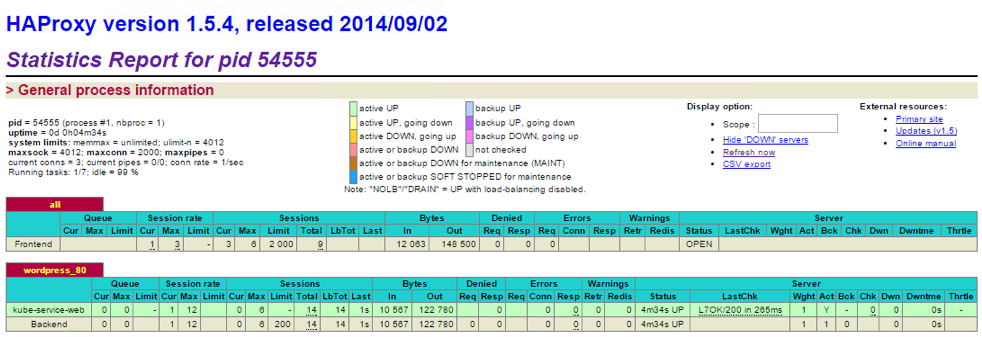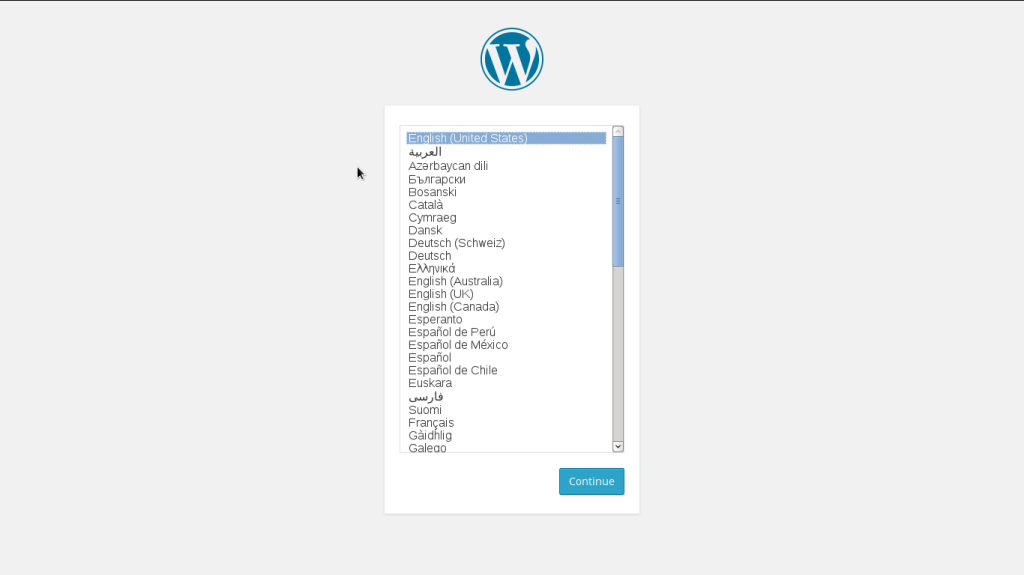blog
WordPress Application Clustering Using Kubernetes with HAProxy and Keepalived

In a previous blog post, we showed you how to install Kubernetes on CentOS 7. Since then, there’s been a number of changes and we’ve seen the first production-ready release. The “minion” term has been changed to “node” and thousands of bug fixes and new features introduced.

In this blog post, we’re going to play with Kubernetes application clustering and pods. We’ll use WordPress as the application, with a single MySQL server. We will also have HAProxy and Keepalived to provide simple packet forwarding (for external network) with high availability capability. We assume a Kubernetes master and three Kubernetes nodes are already deployed on CentOS 7 using instructions described in our previous blog post.
Setting up Persistent Disk
In order to achieve application clustering, we have to setup a persistent disk. This to ensure that all respective pods (which could be running on different minions) can access the same data. For bare-metal and on-premises deployment, we have several choices: NFS, GlusterFS or iSCSI. In this example, we are going to setup a simple NFS mount for the Kubernetes volume.
Our Kubernetes cluster architecture is illustrated below:
Note that we are running on Kubernetes v1.0.0-290-gb2dafdaef5acea, so the instructions described in this blog are applicable to that version.
Setting up NFS Server
Steps in this section should be performed on storage server.
1. Install NFS utilities and create a shared path:
$ yum install nfs-utils
$ mkdir -p /shared/kubernetes/web
$ mkdir -p /shared/kubernetes/db2. Add following line into /etc/exports:
/shared 192.168.50.0/24(rw,sync,no_root_squash,no_all_squash)3. Restart NFS related services:
$ systemctl enable rpcbind
$ systemctl enable nfs-server
$ systemctl restart rpcbind
$ systemctl restart nfs-serverSetting up NFS Client
Steps in this section should be performed on all Kubernetes nodes (master and minions).
1. install NFS client so Kubernetes can mount it for persistent disk:
$ yum install nfs-utils2. Ensure you can see the NFS share on the storage server:
$ showmount -e 192.168.50.135
Export list for 192.168.50.135:
/shared 192.168.50.0/24Create Persistent Volumes
Steps in this section should be performed on Kubernetes master (or Kubernete client via kubectl).
1. Create a persistent volume for WordPress. Create a definition file called nfs-web.yaml and add the following lines:
apiVersion: v1
kind: PersistentVolume
metadata:
name: pv5gweb
spec:
capacity:
storage: 5Gi
accessModes:
- ReadWriteMany
persistentVolumeReclaimPolicy: Recycle
nfs:
path: /shared/kubernetes/web
server: 192.168.50.1352. Create the object:
$ kubectl create -f nfs-web.yaml3. Create a persistent volume for MySQL data. Create a definition file called nfs-db.yaml and add the following lines:
apiVersion: v1
kind: PersistentVolume
metadata:
name: pv5gdb
spec:
capacity:
storage: 5Gi
accessModes:
- ReadWriteMany
persistentVolumeReclaimPolicy: Recycle
nfs:
path: /shared/kubernetes/db
server: 192.168.50.1354. Create the object:
$ kubectl create -f nfs-db.yaml5. List the persistent volumes to verify their existence:
$ kubectl get pv
NAME LABELS CAPACITY ACCESSMODES STATUS CLAIM REASON
pv5gweb 5368709120 RWO Available
pv5gdb 5368709120 RWO AvailableCreate Persistent Volume Claims
The steps in this section should be performed on the Kubernetes master (or Kubernete client via kubectl).
1. Create a persistent volume claim for WordPress. We are going to use 3GB of storage for WordPress data. Create a definition file called claim-web.yaml and add following lines:
kind: PersistentVolumeClaim
apiVersion: v1
metadata:
name: myclaim-web
spec:
accessModes:
- ReadWriteMany
resources:
requests:
storage: 3Gi2. Create the object:
$ kubectl create -f claim-web.yaml3. Create a persistent volume claim for MySQL data. Create a definition file called claim-db.yaml and add the following lines:
kind: PersistentVolumeClaim
apiVersion: v1
metadata:
name: myclaim-db
spec:
accessModes:
- ReadWriteMany
resources:
requests:
storage: 5Gi4. Create the object:
$ kubectl create -f claim-db.yaml5. List the persistent volumes and claims to verify their existence:
$ kubectl get pv,pvc
NAME LABELS CAPACITY ACCESSMODES STATUS CLAIM REASON
pv5gweb 5368709120 RWX Bound default/myclaim-web
pv5gdb 5368709120 RWX Bound default/myclaim-db
NAME LABELS STATUS VOLUME
myclaim-web map[] Bound pv5gweb
myclaim-db map[] Bound pv5gdbNow we are ready to deploy our application cluster.
Deploying MySQL Pod
Steps in this section should be performed on Kubernetes master (or Kubernete client via kubectl).
1. MySQL is required to be the backend for the WordPress. Create a definition file called mysql-pod.yaml and add the following lines:
apiVersion: v1
kind: Pod
metadata:
name: mysql
labels:
name: mysql
spec:
containers:
image: mysql
name: mysql
env:
- name: MYSQL_ROOT_PASSWORD
# change this
value: yourpassword
ports:
- containerPort: 3306
name: mysql
volumeMounts:
# name must match the volume name below
- name: mysql-persistent-storage
# mount path within the container
mountPath: /var/lib/mysql
volumes:
- name: mysql-persistent-storage
persistentVolumeClaim:
claimName: myclaim-db2. Create the object:
$ kubectl create -f mysql-pod.yaml3. We are going to assign a dedicated MySQL service IP address (clusterIP) so all WordPress pods are connected to this one single MySQL database. Create mysql-service.yaml and add following lines:
apiVersion: v1
kind: Service
metadata:
labels:
name: mysql
name: mysql
spec:
clusterIP: 10.254.10.20
ports:
- port: 3306
selector:
name: mysql4. Create the object:
$ kubectl create -f mysql-service.yaml5. Verify that the pod and service are created:
$ kubectl get pods,services
NAME READY STATUS RESTARTS AGE
mysql 1/1 Running 1 4d
NAME LABELS SELECTOR IP(S) PORT(S)
kubernetes component=apiserver,provider=kubernetes 10.254.0.1 443/TCP
mysql name=mysql name=mysql 10.254.10.20 3306/TCPThe IP address for the mysql service must match the clusterIP defined inside mysql-service.yaml. We are going to use that IP address as MySQL host for the WordPress pods as described in the next section.
Deploying WordPress Replication Controller
Steps in this section should be performed on Kubernetes master (or Kubernete client via kubectl).
1. Create a WordPress replication controller (instead of single pod) by adding the following lines in wordpress-rc.yaml:
apiVersion: v1
kind: ReplicationController
metadata:
name: frontend
labels:
name: frontend
spec:
replicas: 3
selector:
name: frontend
template:
metadata:
labels:
name: frontend
spec:
containers:
- name: wordpress
image: wordpress
ports:
- containerPort: 80
name: wordpress
env:
- name: WORDPRESS_DB_PASSWORD
# change this - must match mysql.yaml password
value: yourpassword
- name: WORDPRESS_DB_HOST
value: 10.254.10.20
volumeMounts:
# name must match the volume name below
- name: wordpress-persistent-storage
# mount path within the container
mountPath: /var/www/html
volumes:
- name: wordpress-persistent-storage
persistentVolumeClaim:
claimName: myclaim-web2. Create the object:
$ kubectl create -f wordpress-rc.yamlHere is what you would see in the /var/log/messages:
Sep 1 18:17:21 kube-master kube-scheduler: I0901 18:17:21.302311 888 event.go:203] Event(api.ObjectReference{Kind:"Pod", Namespace:"default", Name:"frontend-y2b96", UID:"a1b1b125-5092-11e5-9f33-000c29cf0af4", APIVersion:"v1", ResourceVersion:"31950", FieldPath:""}): reason: 'scheduled' Successfully assigned frontend-y2b96 to 192.168.50.131
Sep 1 18:17:21 kube-master kube-scheduler: I0901 18:17:21.307555 888 event.go:203] Event(api.ObjectReference{Kind:"Pod", Namespace:"default", Name:"frontend-oe7eh", UID:"a1b1bfc6-5092-11e5-9f33-000c29cf0af4", APIVersion:"v1", ResourceVersion:"31951", FieldPath:""}): reason: 'scheduled' Successfully assigned frontend-oe7eh to 192.168.50.132
Sep 1 18:17:21 kube-master kube-scheduler: I0901 18:17:21.315716 888 event.go:203] Event(api.ObjectReference{Kind:"Pod", Namespace:"default", Name:"frontend-xrk64", UID:"a1b1ce2a-5092-11e5-9f33-000c29cf0af4", APIVersion:"v1", ResourceVersion:"31952", FieldPath:""}): reason: 'scheduled' Successfully assigned frontend-xrk64 to 192.168.50.1333. Create the service for WordPress replication controller in a definition file called wordpress-service.yaml by adding the following lines:
apiVersion: v1
kind: Service
metadata:
labels:
name: frontend
name: frontend
spec:
clusterIP: 10.254.10.10
ports:
# the port that this service should serve on
- port: 80
# label keys and values that must match in order to receive traffic for this service
selector:
name: frontend4. Create the object:
$ kubectl create -f wordpress-service.yaml5. Verify the created pods and services:
$ kubectl get pods,services
NAME READY STATUS RESTARTS AGE
frontend-y2b96 1/1 Running 0 3h
frontend-oe7eh 1/1 Running 0 3h
frontend-xrk64 1/1 Running 0 3h
mysql 1/1 Running 1 4d
NAME LABELS SELECTOR IP(S) PORT(S)
frontend name=frontend name=frontend 10.254.10.10 80/TCP
kubernetes component=apiserver,provider=kubernetes 10.254.0.1 443/TCP
mysql name=mysql name=mysql 10.254.10.20 3306/TCPAt this moment, you can actually access the WordPress site locally inside any of the minions via a frontend service IP address. Run the following command on any minions and you should get a 200 OK in the HTTP return code:
$ curl -I http://10.254.10.10/
HTTP/1.1 200 OK
Date: Wed, 02 Sep 2015 05:33:50 GMT
Server: Apache/2.4.10 (Debian) PHP/5.6.12
X-Powered-By: PHP/5.6.12
X-Pingback: http://192.168.50.131/xmlrpc.php
Content-Type: text/html; charset=UTF-8This service IP address is not routable outside of the Kubernetes cluster. So, our next step is to setup an HAProxy on some of the Kubernetes nodes (in this case, we chose minion1 and minion3) for simple packet forwarding to Kubernetes service IP address.
Deploying HAProxy for packet forwarding
Steps in this section should be performed on Kubernetes minion1 and minion3.
1. Install HAProxy via package manager:
$ yum -y install haproxy2. Add the following lines into /etc/haproxy/haproxy.cfg:
global
log 127.0.0.1 local0
log 127.0.0.1 local1 notice
user haproxy
group haproxy
defaults
log global
mode http
option httplog
option dontlognull
option forwardfor
option http-server-close
contimeout 5000
clitimeout 50000
srvtimeout 50000
errorfile 400 /usr/share/haproxy/400.http
errorfile 403 /usr/share/haproxy/403.http
errorfile 408 /usr/share/haproxy/408.http
errorfile 500 /usr/share/haproxy/500.http
errorfile 502 /usr/share/haproxy/502.http
errorfile 503 /usr/share/haproxy/503.http
errorfile 504 /usr/share/haproxy/504.http
stats enable
stats auth admin:password
stats uri /stats
frontend all
bind *:80
use_backend wordpress_80
backend wordpress_80
option httpclose
option forwardfor
option httpchk HEAD /readme.html HTTP/1.0
server kube-service-web 10.254.10.10:80 check3. Enable HAproxy on boot and start it up:
$ sysctemctl enable haproxy
$ sysctemctl start haproxy4. You should see HAproxy is listening on port 80:
$ netstat -tulpn | grep haproxy
tcp 0 0 0.0.0.0:80 0.0.0.0:* LISTEN 61024/haproxyNow go to http://192.168.50.131/stats or http://192.168.50.133/stats and login with admin/password:
Load balancing to the pods will be done internally by Kubernetes via services, not via HAProxy since we just defined a single backend host, which is the Kubernetes service IP address. HAProxy is just a reverse proxy to access Kubernetes service network which is not routable outside.
Deploying Keepalived for Virtual IP address
The last part would be setting up virtual IP address, 192.168.50.100 for high availability so it floats between two load balancers and eliminates any single point of failure if one of the load balancers (also a minion in this setup) goes down. The following steps should be performed on minion1 and minion3 unless specified otherwise.
1. Install Keepalived via package manager:
$ yum install -y keepalived2. Clear the existing configuration lines and add the following lines on the respective nodes:
minion1 (aka lb1):
vrrp_script chk_haproxy {
script "killall -0 haproxy"
interval 2
weight 2
}
vrrp_instance VI_1 {
interface eth0
state MASTER
virtual_router_id 51
priority 101 # 101 on master, 100 on backup
virtual_ipaddress {
192.168.50.100 # the virtual IP
}
track_script {
chk_haproxy
}
}minion3 (aka lb3):
vrrp_script chk_haproxy {
script "killall -0 haproxy"
interval 2
weight 2
}
vrrp_instance VI_1 {
interface eth0
state MASTER
virtual_router_id 51
priority 100 # 101 on master, 100 on backup
virtual_ipaddress {
192.168.50.100 # the virtual IP
}
track_script {
chk_haproxy
}
}3. Enable the service on boot and start it up:
$ systemctl enable keepalived
$ systemctl start keepalived4. Verify that minion1 is promoted to MASTER while minion3 is demoted to BACKUP state:
minion1 (aka lb1):
Sep 2 18:38:16 kube-node3 Keepalived_healthcheckers[46245]: Opening file '/etc/keepalived/keepalived.conf'.
Sep 2 18:38:16 kube-node3 Keepalived_healthcheckers[46245]: Configuration is using : 5556 Bytes
Sep 2 18:38:16 kube-node3 Keepalived_healthcheckers[46245]: Using LinkWatch kernel netlink reflector...
Sep 2 18:38:16 kube-node3 Keepalived_vrrp[46246]: VRRP_Script(chk_haproxy) succeeded
Sep 2 18:38:17 kube-node3 Keepalived_vrrp[46246]: VRRP_Instance(VI_1) Transition to MASTER STATE
Sep 2 18:38:18 kube-node3 Keepalived_vrrp[46246]: VRRP_Instance(VI_1) Entering MASTER STATE
Sep 2 18:38:18 kube-node3 Keepalived_vrrp[46246]: VRRP_Instance(VI_1) setting protocol VIPs.
Sep 2 18:38:18 kube-node3 Keepalived_vrrp[46246]: VRRP_Instance(VI_1) Sending gratuitous ARPs on eth0 for 192.168.50.100
Sep 2 18:38:18 kube-node3 Keepalived_healthcheckers[46245]: Netlink reflector reports IP 192.168.55.100 addedminion3 (aka lb3):
Sep 2 18:39:18 kube-node1 Keepalived_vrrp[24672]: Opening file '/etc/keepalived/keepalived.conf'.
Sep 2 18:39:18 kube-node1 Keepalived_vrrp[24672]: Configuration is using : 61953 Bytes
Sep 2 18:39:18 kube-node1 Keepalived_vrrp[24672]: Using LinkWatch kernel netlink reflector...
Sep 2 18:39:18 kube-node1 Keepalived_vrrp[24672]: VRRP sockpool: [ifindex(2), proto(112), unicast(0), fd(10,11)]
Sep 2 18:39:18 kube-node1 Keepalived_vrrp[24672]: VRRP_Instance(VI_1) Transition to MASTER STATE
Sep 2 18:39:18 kube-node1 Keepalived_vrrp[24672]: VRRP_Instance(VI_1) Received higher prio advert
Sep 2 18:39:18 kube-node1 Keepalived_vrrp[24672]: VRRP_Instance(VI_1) Entering BACKUP STATENow we are all set. We can setup the WordPress application and access it via virtual IP address, http://192.168.50.100/ .
Testing
Access the WordPress via virtual IP address at http://192.168.50.100/ and you should see the WordPress setup page:
Follow the installation wizard until the end and you’ll have WordPress ready and running in high availability setup. If one of the minions goes down, Kubernetes will automatically fire up a new container to match the replication controller definition. In this case, we defined our WordPress application to run in three replicas.
Notes
- The pod (container) allocation is dynamic and automatically provisioned by Kubernetes. User can access the pod via Kubernetes service address transparently, without knowing the actual location of the pod.
- In this example, MySQL pod is still a single-point-of-failure. We can eliminate this by using Galera Cluster or MySQL replication outside of Kubernetes and exclusively use Kubernetes to host our application clusters, or
- Deploy a Galera Cluster inside Kubernetes as the MySQL backend, as mentioned in this blog post.







